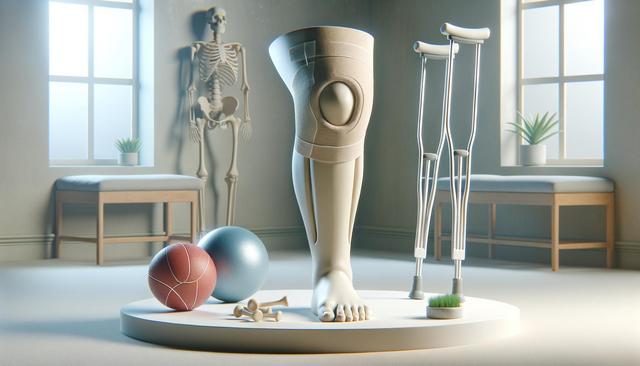Understanding How Long Knee Surgery Recovery Usually Takes
One of the most common questions patients have is how long knee surgery recovery usually takes. While recovery timelines can vary depending on the specific procedure and individual health factors, most people can expect to spend several months healing and regaining strength. Minor arthroscopic procedures may allow partial activity within a few weeks, while total knee replacements typically require three to six months for full recovery. It’s important to follow a structured rehabilitation plan to avoid complications and ensure long-term joint stability.
Recovery is often broken down into phases:
- Immediate post-operative period (0–2 weeks): Focused on pain management and reducing swelling.
- Early rehabilitation (2–6 weeks): Aimed at restoring range of motion and beginning gentle strength exercises.
- Intermediate phase (6–12 weeks): Continued strengthening, walking practice, and increased mobility.
- Long-term recovery (3–6 months): Return to normal activities, including work and low-impact sports.
Staying informed about these stages helps set realistic expectations and motivates patients to stay consistent with their recovery efforts.
What to Expect During Each Stage of Healing
Each phase of recovery carries specific milestones and challenges. Understanding what to expect during each stage of healing can make the process less overwhelming and more manageable. In the first few days post-surgery, patients typically experience swelling, stiffness, and discomfort. This is managed through rest, elevation, ice, and prescribed medications. By the end of the first week, physical therapy usually begins, focusing on gentle movements to prevent joint stiffness.
By the second stage (weeks 2–6), patients begin to regain knee mobility and reduce reliance on assistive devices like crutches or walkers. This is also when progression in exercises becomes critical. From weeks 6 to 12, the focus shifts to regaining strength and balance, while closely monitoring signs of overuse or inflammation. During the final stage, patients work on functional movements such as climbing stairs or squatting, depending on their personal goals and recovery pace.
Exercises That Help with Knee Mobility After Surgery
Rehabilitation exercises are essential for restoring range of motion and strength after knee surgery. Exercises that help with knee mobility after surgery are typically introduced gradually and adjusted based on individual progress. Early on, simple movements like ankle pumps and quad sets help stimulate circulation and muscle activation.
As healing progresses, more dynamic exercises are incorporated, such as:
- Heel slides: Improve knee flexion by sliding the heel toward the body while lying down.
- Straight leg raises: Strengthen the quadriceps without stressing the knee joint.
- Stationary biking: Enhances mobility with a low-impact cardiovascular workout.
- Wall slides or supported squats: Build joint stability and leg strength.
It’s crucial to perform these exercises under the guidance of a physical therapist, particularly to avoid pushing beyond the current capability of the healing knee. Consistency and proper technique are key factors in successful recovery.
Clinics Offering Post Surgery Rehabilitation Plans
Finding the right support system is vital for a smooth recovery. Many clinics offering post surgery rehabilitation plans provide tailored services that include physical therapy, pain management, and regular progress evaluations. These clinics often have multidisciplinary teams that coordinate care and adjust treatment plans based on each patient’s recovery trajectory.
When selecting a clinic, it’s helpful to consider:
- Experience with knee surgery rehabilitation
- Availability of both in-person and remote care options
- Access to specialized equipment and recovery tools designed for knee support
- Patient feedback and success rates
Rehabilitation clinics not only guide patients through recovery exercises but also offer resources like educational materials and mobile apps to track progress. This structured approach can significantly improve outcomes and patient confidence.
Physical Therapy Programs with Home Options
For those who may have mobility limitations or prefer at-home recovery, there are physical therapy programs with home options that provide flexible and effective alternatives to in-clinic visits. These programs often include virtual consultations, video-guided exercises, and periodic assessments to ensure the patient stays on track.
Home-based therapy can be particularly beneficial in the early stages of healing when travel might be difficult. Many programs also offer equipment recommendations for recovery tools designed for knee support, such as compression sleeves, cold therapy devices, and portable exercise bands. These tools help patients stay active and supported between formal therapy sessions.
Working with a licensed therapist remotely ensures exercises are performed correctly and that any complications are addressed promptly. Hybrid options, combining home-based care with occasional in-clinic visits, are also increasingly popular for their convenience and effectiveness.
Conclusion: Supporting Your Knee Surgery Recovery Journey
Knee surgery recovery is a gradual process that requires patience, commitment, and the right support. Knowing how long knee surgery recovery usually takes and what to expect during each stage of healing can help set realistic goals. Incorporating targeted physical therapy, using exercises that help with knee mobility after surgery, and choosing clinics offering post surgery rehabilitation plans are all key aspects of a successful recovery strategy.
Whether you opt for traditional clinical care or physical therapy programs with home options, staying consistent with your rehabilitation efforts and utilizing recovery tools designed for knee support can make a significant difference. With the right approach, patients can return to daily routines with improved strength, mobility, and confidence.




Leave a Reply